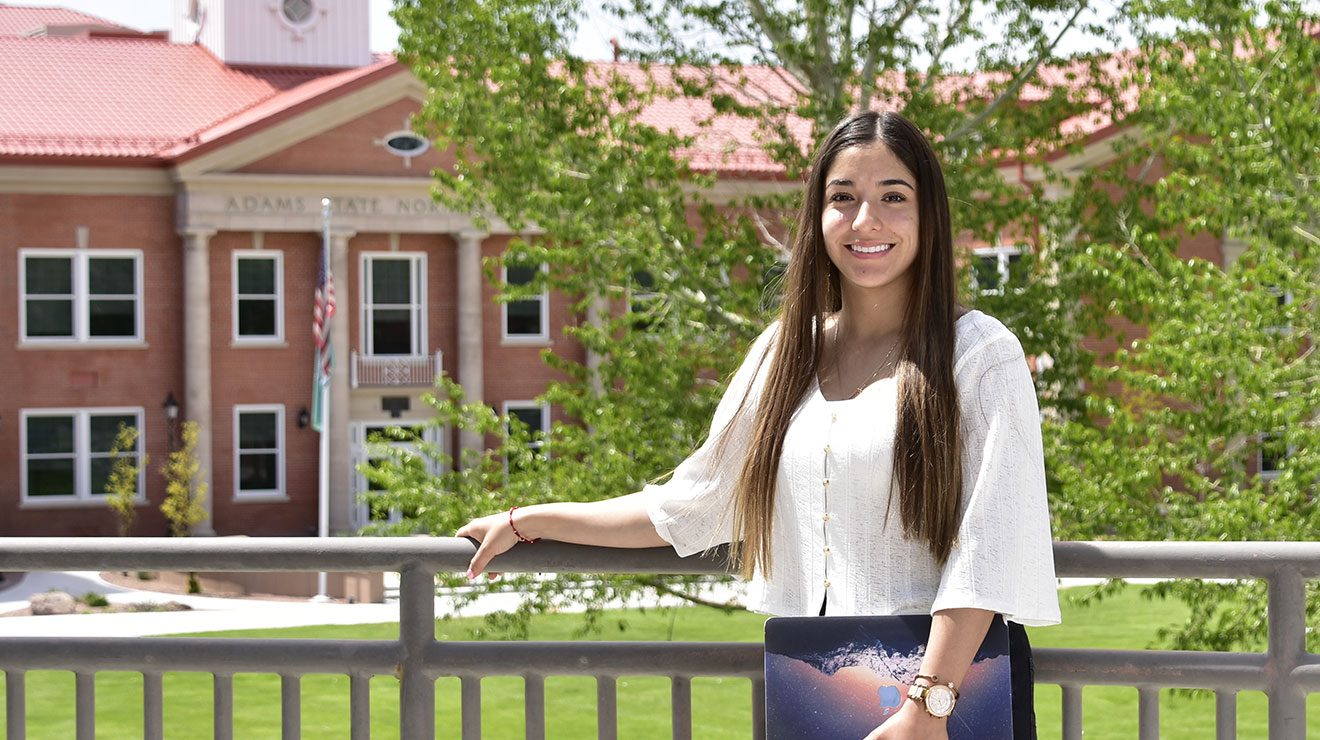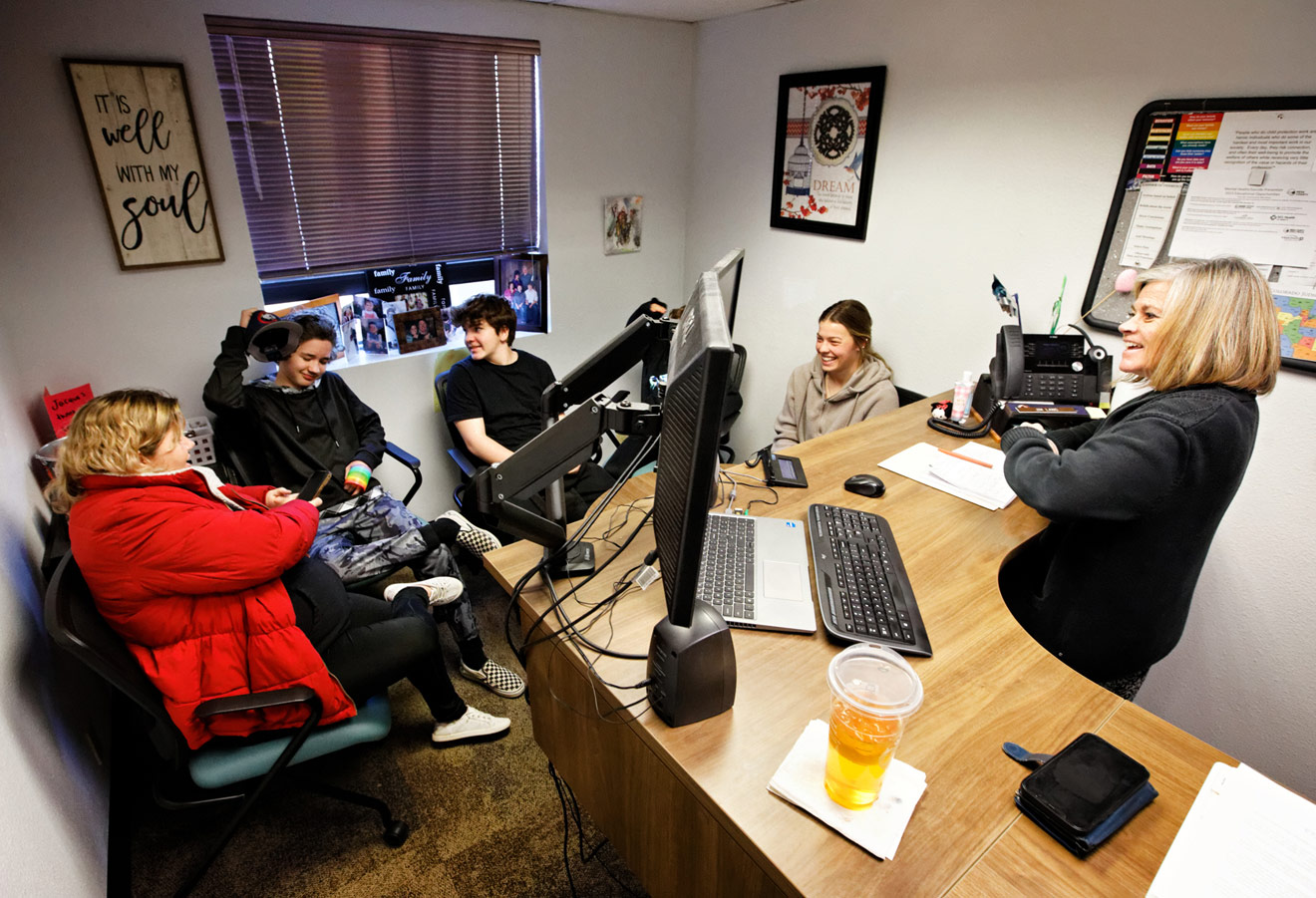Throughout the COVID-19 pandemic, Colorado teachers, parents and students have been forced to adapt to periods of remote learning. Kitchens, bedrooms, living rooms and offices have been converted into temporary classrooms as students try to absorb new material through small boxes on a computer screen.
But some families have struggled to adapt more than others. In fact, approximately one out of every 20 students live in a house without internet access, according to an analysis by the Colorado Futures Center—and these households are disproportionately Hispanic, have elementary school-age children, and are in rural and/or lower-income areas. Many of these kids also don’t have desktop or laptop computers, making at-home classes and assignments even more difficult.
Jazmine Palacios noticed this digital divide in her hometown of Alamosa, a rural community nestled in the San Luis Valley with a population of fewer than 10,000 people. Here, around 47% of the residents are Hispanic and the median household income sits just below $35,000 per year.
“My little six-year-old cousin was getting on [her mother’s] phone, so I asked, ‘What are you doing?’” Palacios recalled. “She said, ‘Oh I have to do homework!’ And I asked, ‘On your mom’s phone?’ and she was like, “Yeah, because I don’t have a laptop.’”
Palacios, who was a community outreach assistant for The Colorado Trust at the time, discovered that her cousin had been doing all her homework on her mom’s phone for the entire school year. “That really broke my heart,” she said.
Last year, Palacios reached out to Tori Martinez, The Colorado Trust’s community organizer in the region who is working with a local, Colorado Trust-supported organization called Helping Others and Promoting Equity (or HOPE Alamosa), to ask if HOPE Alamosa could find a way to distribute laptops to students in need. “When COVID hit last March, we had to pivot what we were doing in community,” said Martinez. “What is it that community needs because of COVID? And Jazmine responded.”
The idea caught on fast, and with the help of the Denver-based nonprofit PCs for People, 710 laptops have been distributed to schools in Alamosa, Conejos, Costilla, Larimer, Pueblo and Yuma counties this past school year. Through the earlier months of the pandemic, these computers allowed many students to keep up with their learning. And now that most schools in southern Colorado have returned to in-person classes, the devices will continue to provide essential help to students who need them during quarantines or summer school.
This digital inequity existed long before the pandemic rocked Colorado and the country. Since last March, when Gov. Polis issued an executive order to close all of Colorado’s schools, the majority of the state’s one million K-12 students have spent time in virtual classes.
As of 2019, 46% of adults nationwide with a household income below $30,000 a year didn’t have a traditional computer, according to a Pew Research Center report. On the other hand, among adults making $100,000 or more, 94% had a desktop or laptop computer, and around two-thirds had broadband services, a smartphone, a desktop or laptop computer, and a tablet.
Because of these disparities, approximately 15 to 16 million K-12 public school students in the United States live in homes without internet connection or an adequate device for virtual learning, according to a 2020 report by the education nonprofit Common Sense Media. Households like that of Palacios’ cousin instead rely on smartphones for internet access. Overall, the percentage of “smartphone-dependent” internet users who make $30,000 or less annually rose from 12% to 26% between 2013 and 2019—a number that may continue to increase in the years to come.
“I use the analogy of driving a car. There are a lot of things that matter when you drive a car: There’s what car you are driving, how well you can drive, and what roads you’re on. All of these things influence your driving experience,” said Stephen Aguilar, an educational psychologist at the University of Southern California.
This can be translated to remote learning, Aguilar says—the device someone has is the car, the experience they have with technology is their driving skills, and the broadband is the road.
“All of these things come together to create the learning experience,” said Aguilar. Yet for many, this experience is a poor one, and as people have started to rely more on technology over the past year, the digital divides have become strikingly obvious.
In 2020, the federal government tried to remedy aspects of the broadband issue. Under the Trump administration, the Federal Communications Commission ran the Rural Digital Opportunity Fund, a $20.4 billion fund auctioned off to bidders to extend broadband networks in rural America. Yet questionable awards to unproven companies remain the lasting legacy of this project, according to the Brookings Institution, a public policy nonprofit.
It also didn’t solve the laptop-access problem, which is important as students across Colorado may be fluctuating between in-person and virtual classes next school year as well. For example, in the Alamosa school district currently, if a student is exposed to COVID-19, the entire class must quarantine for two weeks, Martinez said: “In that case, then the whole class needs laptops.”
After talking to Palacios, Martinez reached out to Danielle Shoots, the vice president and chief financial officer of The Colorado Trust, who connected with PCs for People. With Colorado Trust funding, PCs for People has since distributed 460 Chromebooks and 250 Windows 10 laptops to Colorado schools. They also issued 406 Chrome education management licenses, which allow schools to manage and update the computers remotely, and 207 internet hotspots.
These devices are now property of the schools, though students can continue to use them on an as-needed basis, including over the summer. Administrators say the effort to get more computers to students has been transformative.
“The laptops were a tremendous gift,” said Julie Griego, principal of Baca Elementary School in Pueblo. “This allowed all of us as a school to be one-to-one with devices, which means every student has their own device for the year.” This was key for teachers who didn’t have access to a traditional classroom when classes were remote. “Everything has become individualized, and additional laptops have contributed to providing these opportunities for all students,” Griego said.
This project also allowed many students in Alamosa to keep up with their schoolwork. According to Martinez, students felt “that they could still see their classmates and not feel so isolated in their learning,” she said. Many high school seniors were also able to graduate on time.
Currently, there is no way to know whether the work conducted by Palacios, Martinez and others staved off learning loss, but Martinez is hopeful.
“In talking to a few people, there are indications that the laptops assisted with continued learning,” she said. “It seems that the laptops gave schools and teachers a sense of hope that students wouldn’t fall behind.”





